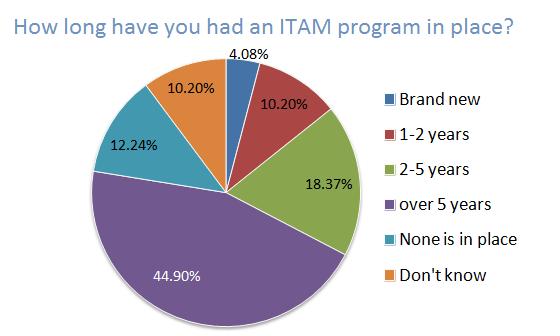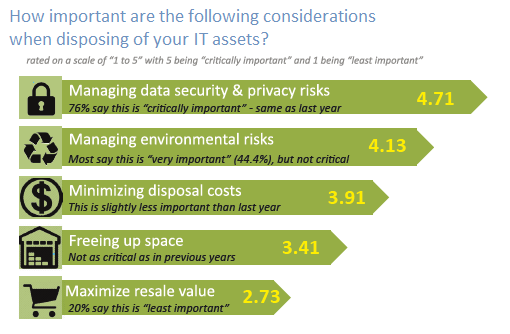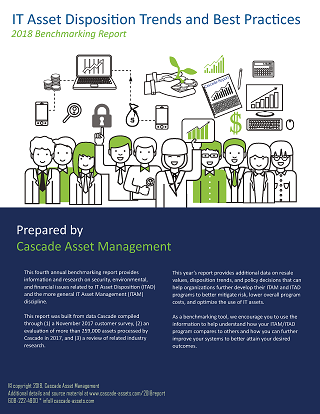| IT Asset Management Programs |
Effective IT asset disposition begins with a coordinated IT Asset Management process. Successful ITAM strategies help organizations generate value from their IT assets and reduce risk. The IT Asset Manager is responsible for managing the disposition vendor, ensuring personally identifiable information is destroyed, and reporting asset status for financial accounting.
Cascade has found that the most effective ITAM programs involve stakeholders from IT, risk management, facilities, environmental health & safety, finance and procurement. Because the CIO and other executives of an organization can be personally liable for the improper disposition of IT assets and loss of data during disposal, it is a good idea to include them in the ITAM program, too.
Most of our survey respondents indicate they’ve operated a coordinated ITAM program for more than two years.
Despite changes with who participates in our survey each year, the rankings of what is most important to people when retiring IT assets remains consistent. Security continues to top the list and sets the stage for how decisions are made in the disposition process.
Cascade customers also recognize the importance of environmental responsibility, and many now promote their responsible ITAD program in sustainability leadership achievements.
Even though retired IT assets generate significant resale value, this is seen as the least important factor when making disposition decisions.








